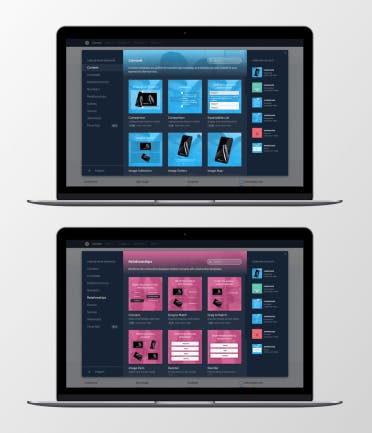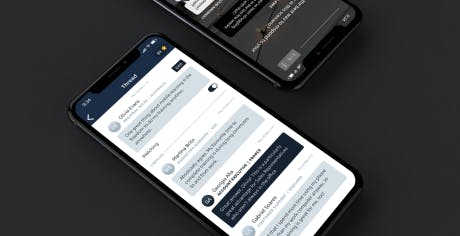How to Create an Online Course

In our technological age, online courses are the go-to for many productive organizations. Gone are the days of formal training, where employees were forced to sit in lectures spanning for hours, parsing through loads of PowerPoint slides, and reading 100-page documents.
Effective design and delivery of eLearning courses is a process of which requires careful analysis and planning, content curation and organization, as well as systematic delivery and proper evaluation. Thus, it can be a real challenge if instructional designers don’t know where to begin.
In short, there are 7 essential steps to successfully create the most effective online course.
- Test the ‘sellability’ of your course
- Choose the course topic people want
- Add enough of the right content
- Get your learners to apply the knowledge you have taught them
- Quickly create your content
- Record and publish the course
- Time for launch!
How to start a successful online course?
Before creating an online course, it’s important to first sit down and make a plan to ensure it launches successfully. The more planning and strategy that you put in an online course, the more likely it is that you’ll have takers for it. First and foremost, you need to think of your audience and make sure the subject you’ve picked is interesting and relevant to them. It’s also important that you make the course interactive and engaging, so you can grab your participant’s attention and keep it. A good way to do that is to make sure that you keep things simple: don’t overcomplicate your subject, and make sure that everything is explained in a succinct and concise way.
How to pick the topic for an online course
Choosing a focus topic for an online course is most effective, accurate, and insightful when built around one’s expertise. Picking a topic is dependent on various factors, including the information which is most essential and relevant for employees to understand and apply practically. A good set of guidelines to follow for choosing the right focus for your online course is based on the following;
- Choose a topic with information that has been proved through studies and with other indications of accuracy. This ensures the information is relevant, useful, and accurate, which are all equally important components of the most successful online course.
- Pinpoint information that is the most relevant to the audience’s area of expertise to build on existing skills. Building on existing knowledge makes for a more informed and in-depth skill set which is essential for the mastery of expertise. This is crucial to being able to know about the organization’s processes, products or services back to front.
- Identify potential gaps in the market which can be filled with important knowledge. These gaps can be detrimental to organizational performance, as well as a hindrance to the personal and professional development of employees. Bridging gaps in the market allows the organization to gain a competitive advantage and to ensure employees are fully informed.
- Provide topics that will enhance the potential for becoming more competitive in an ever-changing environment. Thinking about the future is pivotal to success, especially considering the rapid rise of technology and automation.
Online Course Creation: Conduct market research
Market research refers to the process of collating, interpreting, and analyzing information about a particular market. This applies to both the present and the past, as well as present and potential customers or clients. It is essential to understand the habits and tendencies of the organization’s audience to accommodate their needs and preferences.
It is pivotal to make sure there is demand for what is being taught, otherwise, the investment of time and effort into the creation of the online course will not be worthwhile. Conducting market research is essential for the correct application and immersion of information in a training setting. Ways to do this include recognizing what will provide organizations with a competitive edge and an advantage over competitors, as well as considering what information will be essential in the future of the particular industry.
Employees benefit from absorbing knowledge that is derived from market research as it is applicable to what their customers are searching for in the particular good or service offered by the organization. This makes the training material more direct and straight to the point, cutting out any unnecessary fluff.
Online Course Creation: Test the idea
An idea is deemed successful when it is considered wanted or needed by individuals. So, how can you test it? A good way to measure an idea’s success is to gain feedback from the individuals who enroll in the training course. Their progress from before they started the course to the present is a good indication of how they are finding the course and where they can improve.
Encouraging a constant stream of feedback is most useful for managers, as they are able to go back and design the course in a way that is engaging and suitable for employees. This also goes the other way, whereby the provision of feedback to employees is just as effective. Managers are able to see how the feedback is taken by employees and if they utilize it constructively in the next stage of their learning. If so, the idea can be deemed successful.

Start Creating An Online Course with EdApp
No credit card required.
How to write a course description?
Creating powerful and memorable eLearning course descriptions is the most effective way to grab your audience’s attention and make your course seem aligned with their interests. Keep it short and simple, and make sure to use keywords that are relevant to the topic at hand. Although you want the course to be informative, don’t stray into industry jargon territory, or you risk losing their attention. And most importantly: always end with a call to action, be it to register for the course, subscribe to your page, or even buy your product. A call to action is a great way to engage your captive audience and give them direction on the next steps.
How to design an online course?
Teaching in a fully online environment can be daunting even for seasoned online instructors when they must prepare a new course. However, there are some simple strategies one can take to make the course design process smoother. First and foremost, make sure to develop a clear, consistent structure. Once you’ve mapped out your content, you’ll know what supporting materials you need and be able to break it into smaller modules. Once that’s done, shift your focus to the learner experience, and make sure the content is engaging so they remain invested in learning the material. It’s also important to implement ways to increase collaboration between students, so they can engage with the content as a group.
How to create an online workshop?
Emphasis on the ‘packaging’ of the workshop. The first step is to ensure you’ve found the right platform to support your content. Once that’s done, create a structure and plan so you know what you’ll be doing and how you’ll be doing it. Once you’ve gotten to the point where you are holding a workshop, then make sure to engage participants through lively discussion, and give them plenty of different options to do so, such as through discussion questions, one-on-one chats, and break-out groups. Finally, and most importantly, make sure that each workshop has a central topic, and that all activities revolve around the topic, to ensure the most benefit out of the session.
Course content creation
eLearning development begins with curating the most accurate and relevant content. Making an online course is a more difficult task than it seems to be, whereby various factors must be taken into account to create the most effective and worthwhile course for learners. Courses are most effectively designed when a strong LMS is employed, alongside a good authoring tool. The authoring tool is responsible for instructional design without actually employing an instructional designer.
An effective and worthwhile authoring tool to invest in will provide users with a plethora of unique features for optimal content creation success. These include a vast library filled with a plethora of ready-made templates, a spaced repetition tool, and introduces the power of anytime and anywhere. Good authoring tools like these import your content into the course in their most optimal form. To test your learner’s knowledge, you can check this list of free online test maker or create quizzes, assessments, and courses for free with EdApp authoring software.

Secret golden nuggets
When you provide information, which cannot be found elsewhere, learners are more inclined and motivated to be more productive and progressive.
The effect of quality video content
Quality video and interactive content are much more effective than textual content as learners are able to experience a real-life simulation, enhancing and expanding practical skills. Internet-related infrastructure has become cheaper, more powerful, and easier to navigate, while online learning environments have taken over the education landscape as we know it. Willmot et al.’s (2012) research depicted a strong correlation between video content and learning, whereby there is intricate evidence of video being able to inspire and engage learners. It can be incorporated into learner-centered training in various ways, for instance, increasing purpose and motivation.
Learning mediums have been revolutionized in this modern learning age, whereby types are all different and widespread, simultaneously offering varying benefits and limitations. We have outlined different types of popular learning formats today.
- Hybrid Courses: primary delivery is online, however, students are required to also meet in traditional face-to-face sessions, also known as blended learning.
- Web-Supported Courses: primary delivery is face-to-face sessions, however, students are required to also complete online elements as part of the course.
- Internet Courses: the course is completely delivered online.
- Information Highway Courses: the entire course is delivered through interactive video.
- Telecourses: courses are delivered completely by video or TV.
- Digital Media Courses: the entire course is delivered via digital video or media resources.
Research conducted by Demetriadis and Pombortsis (2007) suggests that eLearning modules provide a disadvantage to learners and their counterparts when it comes to a lack of immediate communication. Adding video into the mix creates a hybrid learning lesson, which immediately boosts opportunities for learner interaction and contributes to personal and professional success.
Launching the course
Launching the course is one of the most important parts of the entire process of creating an online course. It must be effective, whereby employees understand their purpose in learning the information and how it can be used outside of the workplace.
A great way to launch your online courseware is through a cloud-based authoring tool. Cloud authoring is a great way to create eLearning courses, particularly if you’re working with a team, as it allows you to share resources, software, and other information with members. You can thus collaborate and save time while improving teamwork within your organization.
There are a number of effective and efficient cloud-based SCORM authoring tools present on the market, the most popular ones including Lectora Online, Elucidat, EdApp, Gomo Learning, and EasyGenerator, to name a few, although you should always research thoroughly and choose a tool which fulfills all of your needs. We have gathered the top answers to why working with a cloud-based authoring tool is better than working on a desktop-based authoring tool. From this, you will be able to understand how you can take advantage of cloud-authoring and create amazing eLearning courses with your team.
When you’re working with a team, each person usually has a set of responsibilities. In such a case, a quick feedback cycle is imperative for efficient results. When creativity is flowing, as it usually does when eLearning professionals are working diligently on a project, stopping work to ask for feedback or share information and resources can be disruptive. Content-based authoring tools eliminate this problem as sharing and feedback can occur instantaneously. Even if your team is far away, you’re always connected.
Working with a team soon leads to the familiarity with each team members’ strengths and weaknesses, as well as methods and styles of working. When the point of knowing the team member inside out is reached, assigning tasks is made seamless and simple. For example, the instructional designer will design the storyboard, the graphic designer will take care of the graphics and the visuals, while the SME will review and make sure that the content is genuine and error-free. Cloud-authoring facilitates and improves teamwork, increasing the efficiency of the whole team, which results in a better final product.
Working individually or with only a few team members can result in a potential problem if you fall sick, or if an important member of the team is ill or cannot be present in the office due to some reason. Having a good number of people in the team ensures that there is no dependency on a single person and that another team member can shoulder the responsibility of the absent team member if the need arises. Cloud-authoring allows members of a team to work from home too, which eliminates the problem of a team member being absent from the office.
Cloud-based authoring tools allow you to make changes in your eLearning courses even if they have been deployed and are live on a learning management system. This comes in handy when you need to upgrade old courses in accordance with changing times and trends. Thus, cloud-authoring makes what would have been a complicated process into something where you or any of your team members just need to log in and start editing. There are even cloud authoring tools that let you translate the same course into multiple languages!
With all of the discussed features, you will save an incredible amount of time and effort for a more effective training strategy. If you are still using a desktop-based authoring tool, we hope you now understand the benefits of investing in a cloud-based authoring tool, for the betterment of your organization.

Cue, microlearning.
Microlearning is the perfect solution for learners after rapid but effective learning. It works by providing information to learners in small, bite-sized chunks for easy digestion of essential knowledge. Employee engagement and productivity are good indications of how successful your online courses are.
These online modules are most effectively created through the employment of a good LMS with an integrated authoring tool. The authoring tool is responsible for the design and curation of online courses, which determine the extent of training success.
Develop achievable organizational objectives and goals
To guide employees along a path of improvement and productivity, achievable organizational objectives and goals must be established. It is important to make sure a middle ground is found between being too difficult or too facile. If it is one of these ends of the spectrum, learners are likely to become disheartened and lose all motivation. Also, you should consider creating your own website for the online course. Nowadays, it is easier to reach the IT community; on HostingAdvice, you can get reliable advice, how-to guides, and much more from hosting and programming experts.
Clearly communicate the purpose of their training to employees
When employees understand the purpose of what they are learning and how they can apply it to real-life situations, they tend to develop strong drive and motivation. It is important to do this at the commencement of their online training course for a successful beginning.
Adopt the right LMS
The Learning Management System is the most crucial ingredient to a successful learning strategy. Adopting the right one requires research and analysis of various LMS’s and assessing whether it caters to the needs of your employees. There is a range of LMS’s, each withholding different features.
Curate lessons using accurate and precise information
The curation of lessons is reliant upon the effective and seamless integration of relevant and unique information into the course. Content must be relatable and interactive for the maximum absorption and retention of knowledge.
Utilize the unique features offered by the authoring tool
Unique features of good authoring tools, such as EdApp, include gamification, spaced repetition (Brain Boost), mobile compatibility, and a template library.
Once an effective microlearning lesson has been curated and successfully developed, 5 essential steps are next on the cards.

How should you go about creating your online courses?
Analysis
Proper analysis is necessary for the next step of the design and delivery process, i.e. planning. Proper analysis consists of knowing your target audience, knowing what skills are required to be inculcated in them in order to serve their organization better. This also includes determining what delivery method would be best suited to the learners. Analyzing the needs and preferences of your target audience lets designers determine the best learning strategy to use in their courses, as well as determining which eLearning tools and elements will prove more effective than the others. For example, young sales executives are likely to learn better through videos, group activities, and interactive courses, while older sales staff will likely prefer either lectures from an instructor or a course that is more textual in nature.
Planning
Once you’ve got a firm grasp of who the target audience is, what they need, and how to deliver it, there comes actual planning. In this phase of course development, you will determine the learning objectives, the gist of each lesson, the design strategies to use, as well as the means of assessing what the learners have learned. All of this needs to be documented well, in order to ease into the next step of the design and delivery process, which is content curation and organization.
Content Curation and Organization
This is the phase where utmost care is to be exercised. Instructional designers must collect information to be transformed into content through extensive online/offline research and communication with the SMEs (Subject Matter Experts), while ensuring that the information collected can easily be converted or chunked into a sequence of lessons. Once the content is collected and chunked, it must be complemented with interactivities and exercises in a fixed frequency. It must also adhere to a framework of instruction that is informative and systematic. Bloom’s taxonomy (which has been revised since its initial formulation) is an instructional design framework considered to be the gold standard by many, however, there are other instructional design models and methodologies like the ADDIE model lesson plan as well as the SAM model which can be used according to the needs of the learners.
Delivery
Traditional classroom training used to be the most preferred method of delivering learning before the advent of eLearning, and is still used in a number of organizations worldwide. However, eLearning is an advanced form of learning delivery that offers a number of advantages to its learners in addition to increasing retention while minimizing the time spent learning. Today, eLearning is available anytime, anywhere to learners in the form of mLearning, accessible on their smartphones. Also, mLearning is chunked into short, concise modules no longer than 5-7 minutes in order to make the digestion and retention of information easier for learners, a learning strategy known as microlearning or bite-sized learning. eLearning is a dynamic field, and staying up-to-date with the latest trends and technologies will ensure that your eLearning courses development stays relevant and effective.
Evaluation
Evaluation is something that no eLearning professional should overlook, or underestimate, as it is the actual test of your eLearning course. The whole point of an eLearning course is to ensure that a learner absorbs and retains information, or develops a skill. Thus, evaluation is not only the measure of whether a learner has succeeded in retaining information or developing a skill, but also the measure of the success or failure of the eLearning course, and consequently, the instructional designer. Assessments are the go-to evaluation method used in eLearning courses, but in addition to in-course assessments, learners should be assessed for the skills they’re supposed to have learned in the real world as well. In addition to these, learners must understand that learning is their responsibility towards their organization as well as themselves, and must assess themselves on their own from time to time.
The success or failure of eLearning depends on a number of factors, all of which might not be in the reach of the instructional designer to rectify. However, if you follow the steps listed above, you’ll surely find your eLearning courses are much more effective than before and have fewer errors and flaws.
Given the above information, creating an online course can seem difficult and detailed, however, is well worth it if all factors discussed are considered.
For a bit of inspiration, check out this list of free online courses.
You can create an online course for free with EdApp’s Authoring Tool.
Author
Guest Author Daniel Brown
Daniel Brown is a senior technical editor and writer that has worked in the education and technology sectors for two decades. Their background experience includes curriculum development and course book creation.
